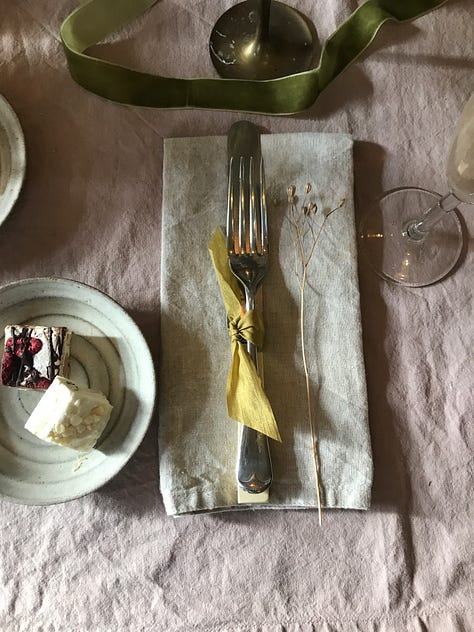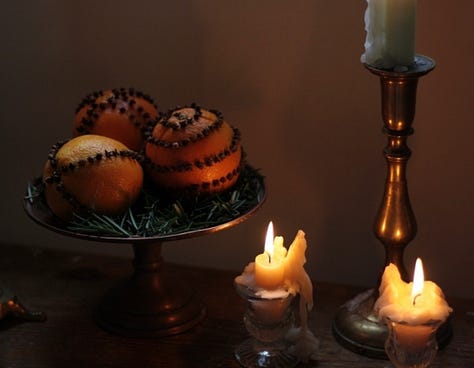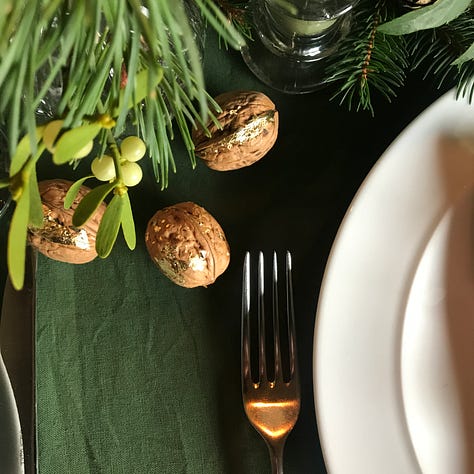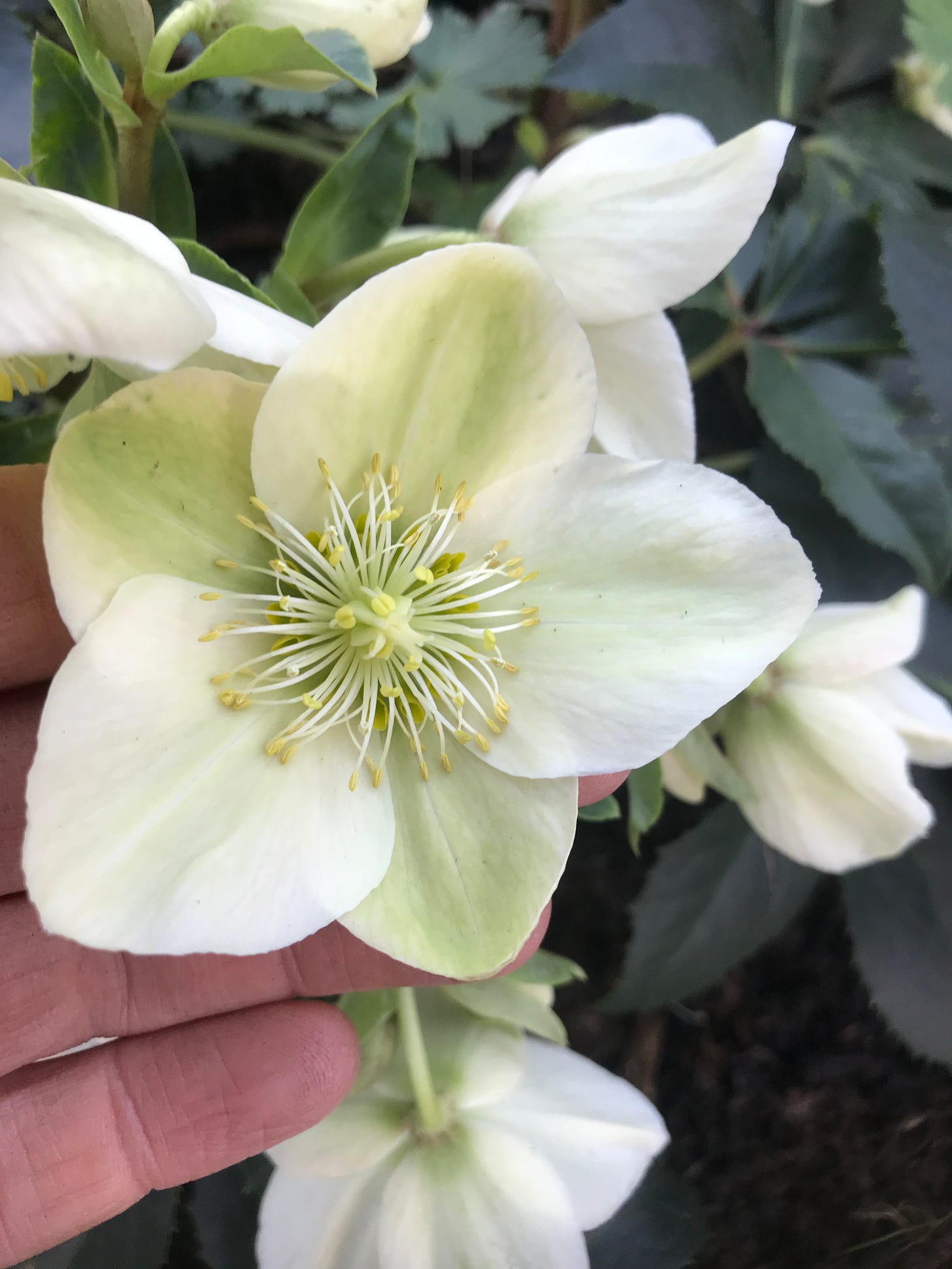Despite being the least amount of growth in gardens and across the countryside in darkest December, more than at any other time of the year, we appear to want to get closer to nature, by way, mostly, of the Christmas wreath on the door.
I wonder what it is about this celebration that does that?
In deep midwinter, when most of our time might be indoors, we still do want to have a sense of connection with the natural world outside.
I maintain it is essentially human to do so. It might be wrapped up a bit differently, but the romans celebrated Saturnalia in the same way by making wreaths, or crowns with laurel. To symbolise the circle of the year, no start or finish as such, made with evergreen shining glossy leaves, robust plants of strength when the days are their shortest.
We have made these for millennia.
Still built upon the traditions from which they came, we make them in assorts of ways but often stuck on German pines with English holly and ivy. The Romans used laurel since it grew in abundance, was soft to work with as a crown. I am sure they wouldn’t have used holly in the same way! Still, it takes some lateral thinking to consider what is growing around us rather than try to source what we recognise as ‘Christmas’.
It seems crazy to me to use material flown or travelled anyway to celebrate a season. And missing the point of gathering material from around your home to bring in. Of course, if you have a mature estate with ancient shrubs and trees, it is much easier to find foliage. Here in Audley End, I can look wistfully across the fences at ‘the big house’ and it’s abundant gardens. I can look. But I can’t cut. When you don’t have a stately house and garden to cut from, how do you bring the season indoors?
First, forget that you have to use traditional holly and ivy. If you can’t find it, you can’t have it. What else to use?
What do you have in your garden?
Look at your plants a little differently. I challenged myself this week to make a wreath from what was growing in our garden. Fortunately, I do have some mature shrubs, and I simply cut what looked good - dogwoods, hazel, cotoneaster with it’s rainbow leaves still attached, eucalyptus and rosemary and then some pine from the old Christmas tree plantation that flanks the field plot. But it certainly isn’t traditional and a little wild like a Catherine wheel firework.
Done in the truest spirit, foraging is a beautiful thing, almost traditional at Christmas. One mustn’t forage for commercial gain and must have the permission of the landowner, or done from a public footpath. But for a stem or two for your own home, there are essential rules which I believe are covered by ‘if you can’t seen I have been, then I’ve been respectful’. I take this to mean that you have left plenty for others, for wildlife, for food and shelter, for pollinators still feeding in winter and especially, for the plant itself. If you can’t do this, then don’t cut. Perhaps this is why traditionally holly and ivy are traditional in the UK. Growing very fast each year and quite the menace in churchyards, it can be a useful exercise to cut back these plants, and why not recycle through the home as decoration?
In other hedgerows and woodlands, you might find branches of hawthorn, rose hips and larch. These little berried bare branches or knobbly cones add structure and texture to gathered greens. Think glossy and contrasting shaped leaves. It could be anything, box, sarcococca, choisya or laurels. I love arbutus, the strawberry tree with orange red hanging baubles. Greenery inside, shines, reflecting lamp light on these shortened days.
Herbs are perfect material. Bay trees often need a trim now and these branches together with sage and rosemary are wonderfully uplifting in scent and will complement each other gathered on the fireplace or tucked into shelves of books. I’ve used these with golden lime crab apples decorations for a kitchen garden gathered display. Of course these will dry out in warm homes, then can be saved in jars for cooking.
For a floral display, there are scented blossoms too. Buy cyclamens and hellebores from your local nursery, and slip into terracotta pots, trimmed with moss. Plant back outside when the celebrations are over, or gift at New Year. You can still plant paperwhites for indoor flowering that will shoot up with fresh growth and flower into January. White blooms with glossy green leaves are essential combinations for December.
If like me, you don’t have an orchard with mistletoe hanging off lychen covered branches, order a box from the English Mistletoe Company, gathered from the West Country. Tuck branches into arrangements, make a ball as a centrepiece or gather for the front door. The Celts valued mistletoe for its healing properties and it is symbolic of vitality. In the language of flowers, it represents ‘overcoming difficulties’. We’d all like some of that protection.
But there are so many other materials you can use. I admit to beginning Christmas gathering from right back in the summer and collecting material to dry. Panicum grasses are cut and tied up in the studio in huge bunches. These are like little fibre optics in wreaths and on tables, as well as in bouquets and arrangements throughout the summer. A must have for any cut flower garden, together with other grasses and seed heads like poppies and clematis ‘old mans beard.
And flower heads of strawflowers, echinops and alliums give structure, and a different vibe. One of Victorian, faded antiqued pale decoration in direct contrast to glossy evergreens - I don’t mix and match but choose my scheme. In the hedgerows there might be nipplewort, teasels and hogweed; now dried back, safe to cut. Here we grow honesty simply for the sparkling paper branches at Christmas and I bring out saved pine cones year after year.
For a little craft, I have used gold leaf sheets, egg white as glue, decorated walnuts and spices with sparkle. I love studding oranges with cloves. No, not native but local if I swipe from the fruit bowl. Evocative nonetheless with the orange juice scenting the cloves and wafting with optimism and joy on these darkest of days.
Whatever you can find and arrange with, scents and texture from nature bought inside really do have an extra magic in midwinter.




















Brilliant ideas Anna and such wonderful inspiring photos as always. Loved the colours in last week’s dahlia notes
Inspirational texts and photos .
Am going to forage in my garden for this year's wreath!